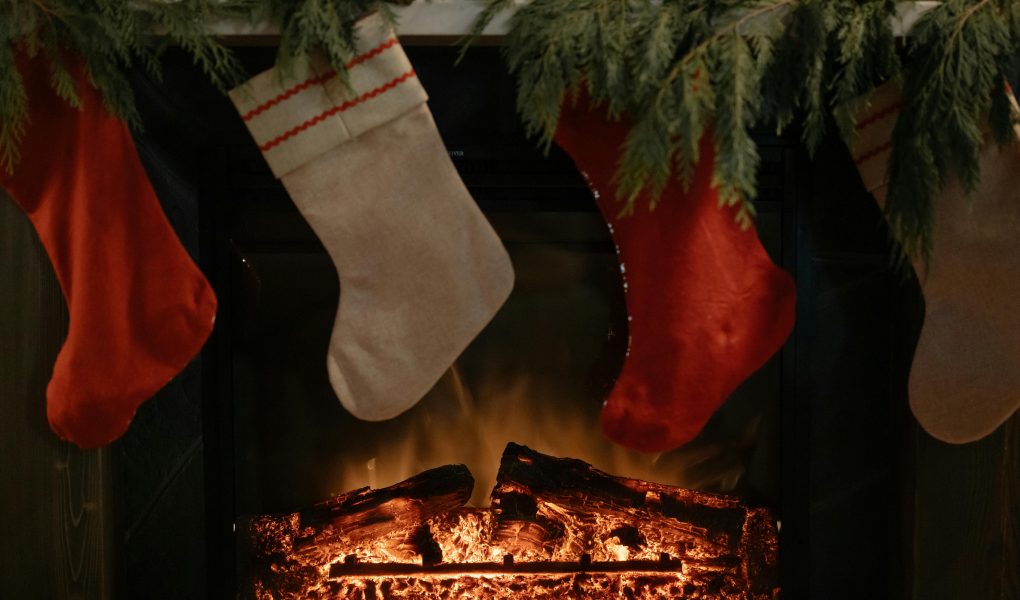The holidays are a time for traditions, and one beloved custom that brings warmth and excitement to the season is hanging Christmas stockings. While many people purchase pre-made stockings, making your own adds a personal touch that can’t be replicated. Whether it’s for family members, friends, or as a decoration, a handmade Christmas stocking is a thoughtful and fun way to celebrate the season.
But what if you don’t have a sewing machine or don’t know how to use one? Not to worry! You can still create beautiful, unique Christmas stockings with just a few simple materials and some basic handcraft techniques. In this article, we’ll guide you through step-by-step instructions on how to make a stunning Christmas stocking without the need for a sewing machine.
Materials You’ll Need to Get Started
Before you start crafting your Christmas stocking, it’s essential to gather all the necessary materials. While you may not have a sewing machine, you’ll be surprised at how easy it is to create a stocking with just a few basic supplies and some simple techniques.
Here’s what you’ll need:
1. Fabric: Start by choosing a fabric that suits your style and the overall theme of your holiday décor. Velvet, felt, cotton, and flannel are popular fabric choices for Christmas stockings. You can even mix and match fabrics for different parts of the stocking to make it more fun and festive.
2. Scissors: A sharp pair of scissors is essential for cutting fabric accurately and neatly.
3. Fabric Glue or Hot Glue Gun: If you don’t want to sew, fabric glue or a hot glue gun will work wonders. Both are easy to use and bond fabric together securely. Hot glue can be especially helpful for affixing embellishments like pom-poms, ribbons, or appliqué designs.
4. Cardboard or Stiff Paper (Optional): For creating a template for your stocking, you can use cardboard to draw your pattern before cutting the fabric. This ensures uniformity and gives you a solid foundation to work with.
5. Ribbon or Lace: Adding a ribbon or lace trim to the top of the stocking creates a beautiful finish. You can also use it to create a loop for hanging the stocking.
6. Embellishments: Buttons, embroidery floss, sequins, pom-poms, or fabric paint can all be used to personalize your stocking. These elements allow you to get creative and make your stocking truly unique.
Once you’ve gathered your materials, it’s time to dive into the fun part: crafting your very own Christmas stocking!

Creating a Template for Your Stocking
One of the most important steps in making a Christmas stocking is creating a template. While you could freehand the shape of the stocking, using a template ensures that both sides of your stocking are symmetrical, which is especially important when you’re handcrafting. A template will help you cut your fabric accurately and ensure that your stocking has a consistent size and shape.
To create your template, follow these steps:
1. Draw the Shape of the Stocking: Start by drawing the outline of the stocking onto a piece of cardboard or stiff paper. Begin with a large rectangle as the base, then add a curved top for the cuff. You can make the shape as long or short as you like, but generally, stockings are about 18–20 inches tall. You can use an existing stocking as a reference or look up stocking templates online for inspiration.
2. Add the Cuff: Many stockings have a cuff that folds over the top. You can either make this part separate or attach it to the stocking base. If you want a cuff, add an extra couple of inches at the top of your template to create a fold-over effect.
3. Cut Out the Template: Once your design is drawn, carefully cut out the template. This will serve as a guide for cutting your fabric. Ensure that the edges are smooth and even to help with the final result.
4. Use the Template for Both Sides: Place the template on your fabric and trace it with a pencil or fabric chalk. You will need two pieces of fabric—one for the front and one for the back of the stocking. You can use different fabric for the front and back or use the same fabric for both sides, depending on the look you’re going for.
By using a template, you’ll ensure that both sides of your stocking are the same size and shape, making the final product look professional and neat.
Cutting and Assembling the Stocking
Now that you’ve created a template for your stocking, the next step is to cut out the fabric and assemble the pieces. This is the point where your stocking will start to take shape, so be patient and precise as you work.
1. Cut the Fabric: Use the template you’ve created to cut out two identical pieces of fabric. Make sure to follow the edges carefully, and use sharp scissors for clean cuts. If you’re using multiple fabrics or patterns, be sure to plan the placement carefully to get the right look.
2. Cut the Cuff (Optional): If you’ve decided to add a cuff to your stocking, cut a separate piece of fabric for the top portion. This should be wide enough to fold over the top of the stocking. Typically, a 3–4-inch cuff works well, but you can adjust it based on how big you want it to be.
3. Align the Fabric Pieces: Once you have the two main fabric pieces cut out, place them together with the “right” sides facing each other. The right side refers to the side of the fabric that will be visible once the stocking is completed. Make sure the edges match up, and the pieces are aligned correctly.
4. Glue the Edges: Using fabric glue or a hot glue gun, carefully glue the edges of the stocking together. Start by applying glue to the sides and bottom of the stocking, leaving the top open. Press the fabric pieces together gently and allow them to dry before moving on to the next step. Be sure to leave enough space at the top to insert the cuff or a ribbon.
5. Attach the Cuff (Optional): If you’re adding a cuff to your stocking, now is the time to attach it. If it’s a separate piece, fold it over the top of the stocking and glue it in place. You can either make the cuff removable or glue it down, depending on your preference.
Once you’ve glued the stocking together and attached the cuff (if applicable), allow the glue to dry completely. This will ensure a secure bond before you start adding embellishments.

Adding Personalization and Decorative Touches
One of the best parts about making your own Christmas stocking is the opportunity to personalize it. Adding decorative touches makes the stocking feel even more special, whether you’re creating one for yourself, a friend, or a family member. The possibilities for embellishments are endless, so let your creativity shine through as you finish your stocking.
Here are some ways to personalize and decorate your stocking:
1. Embroidery or Appliqué: If you enjoy embroidery, consider adding a name or festive design to your stocking. You could stitch “Merry Christmas” or the recipient’s name in colorful thread or add small designs like holly, stars, or snowflakes. Appliqué allows you to attach fabric shapes onto the stocking for added texture and visual interest.
2. Ribbons and Bows: Add ribbons or bows to the top of the stocking to give it an extra pop of color. You can use festive colors like red, green, or gold to complement the fabric or choose a contrasting color for a bold look.
3. Sequins and Glitter: If you want your stocking to sparkle, consider adding sequins or glitter. These can be glued onto the stocking in patterns like snowflakes or stars. Make sure to use fabric-safe glue to avoid mess and ensure the embellishments stay in place.
4. Pom-Poms and Beads: Adding pom-poms to the cuff or edges of the stocking creates a playful, whimsical touch. You can also use beads or buttons as decoration, sewing or gluing them in place along the seams for a vintage or chic feel.
5. Personal Touches: Think about the person the stocking is for. Is there a specific theme or color palette they love? You could incorporate their favorite colors or interests into the design. For example, for a pet lover, you might add paw prints or a small dog silhouette.
By taking these steps, you’ll have a fully functional and beautiful stocking to hang on Christmas Eve, filled with holiday joy and creativity.
Conclusion
Making your own Christmas stockings without a sewing machine is not only achievable but also a fun and meaningful way to add a personal touch to your holiday décor. With just a few basic materials, you can create a unique, beautiful stocking that reflects your creativity and love for the season. From selecting fabrics to adding embellishments, each step is an opportunity to make your stocking special.
No matter your skill level, this project can be done without a sewing machine, and the results will be a set of stockings you’ll be proud to hang by the fireplace year after year. Take your time, get creative, and remember that the real magic of Christmas is in the love and joy you put into every handmade creation. Happy crafting!



